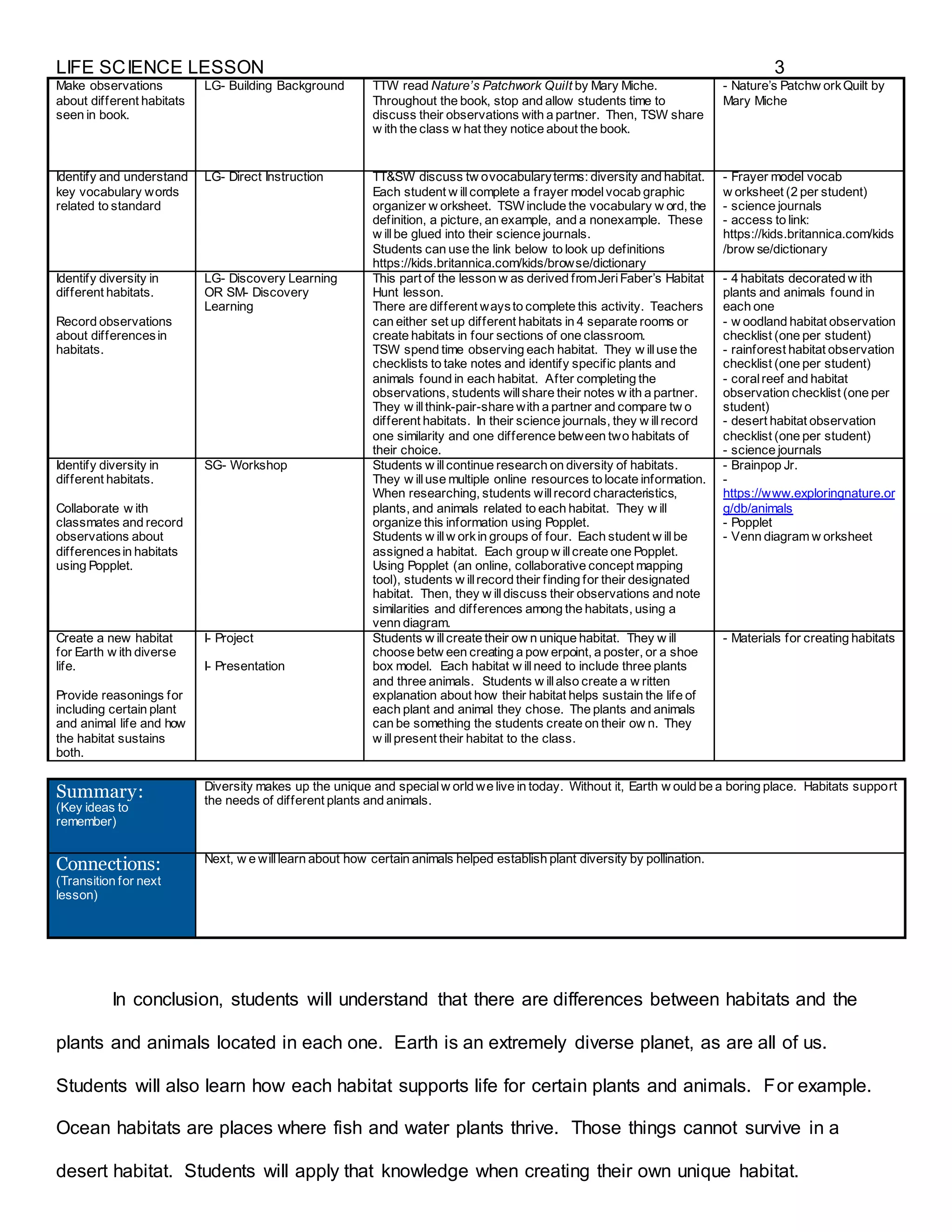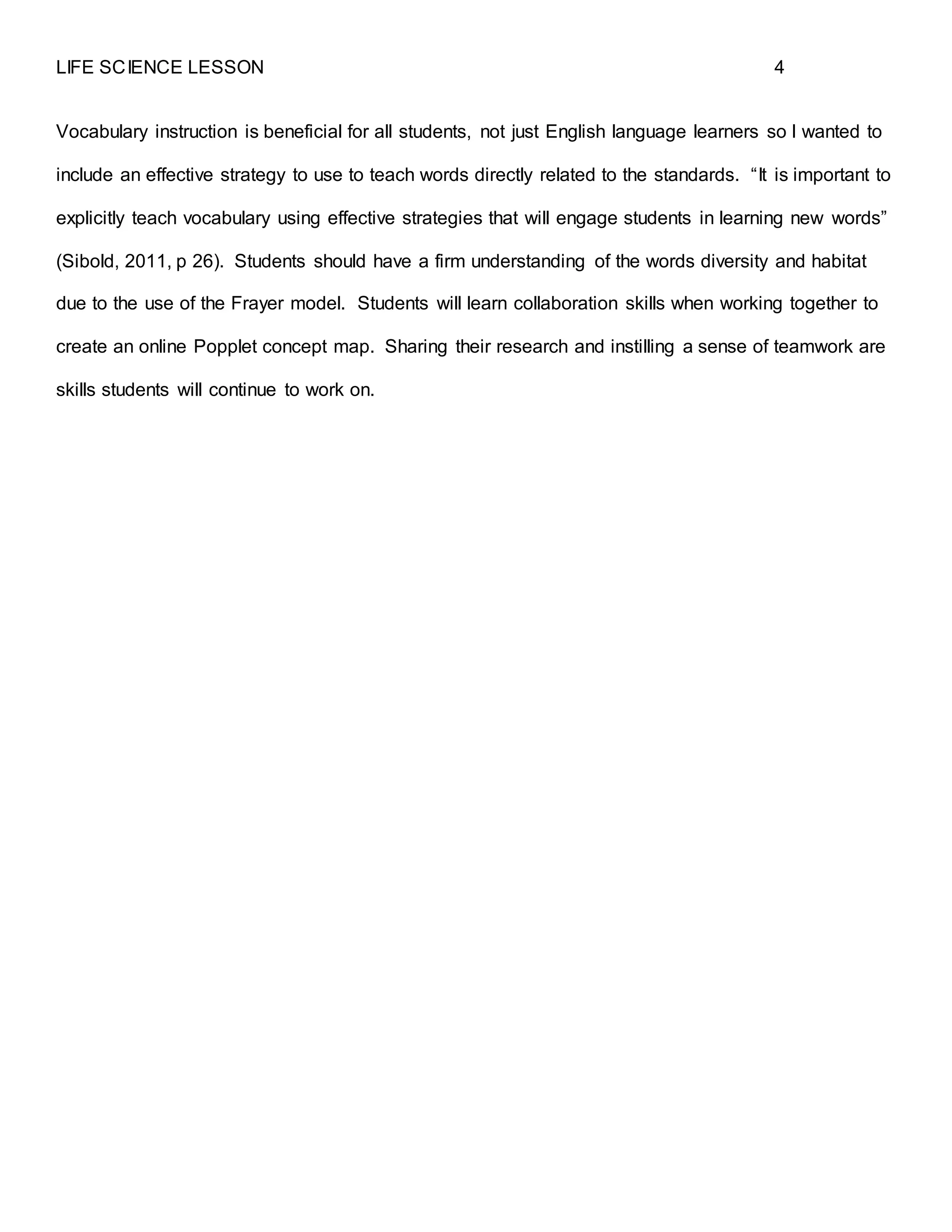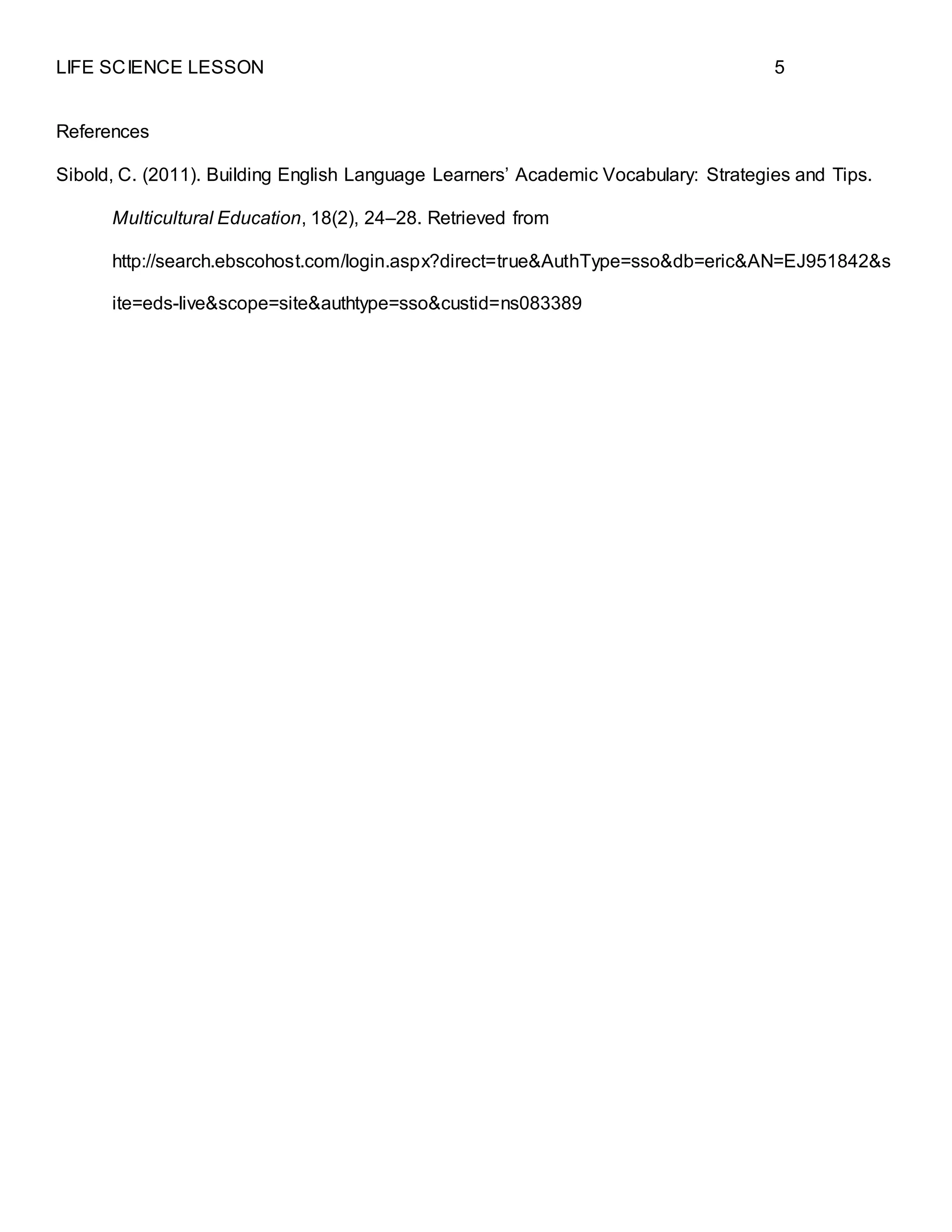This educational document outlines a life science lesson plan for 2nd graders focused on exploring various habitats and the diversity of plants and animals within them. Students will make observations, engage in collaborative research, and create their own unique habitats while understanding the importance of biodiversity and the relationships between organisms and their environments. The lesson emphasizes hands-on activities, vocabulary development, and critical thinking as students analyze similarities and differences between habitats.

![LIFE SCIENCE LESSON 2
In this lesson, students will explore different habitats and observe the diversity of plants and
animals within each one. Every day, humans impact Earth in both positive and negative ways. It is
important for students to learn about life sciences and how delicate our planet is. After exploring
different habitats, students will apply their knowledge and create their own unique habitat with new
plants and animals. They will explain how their habitat helps sustain life for the plants and animals
they included.
LESSON PLAN TEMPLATE
Grade Level: 2nd Title of Lesson/Unit
Habitats and Diversity
Time Requirements:
Multiple Days
Directions: Add items to each section using bullet points. Use the ‘ruler’ function of Word to adjust the formatting. Each component should be as
complete as possible.
Desired Outcomes
(Goals & Objectives)
Direct Assessments
(Connection to Goals & Objectives)
2-LS4-1.Make observations ofplants and animals to compare the
diversity of life in different habitats.
Make observations (firsthand or from media) to collect data which
can be used to make comparisons.
LS4.D: Biodiversity and Humans
There are many different kinds of living things in any area, and
they exist in differentplaces on land and in water.
W.2.7 Participate in shared research and writing projects (e.g.,
read a number of books on a single topic to produce a report;
record science observations).
W.2.8 Recall information from experiences or gather information
from provided sources to answer a question.
- Frayer model vocabulary organizer
- Venn diagram comparing habitats
- Science journal entries
- Popplet
- Student-created habitats
Key Questions
(Directly related to Outcomes)
Resources
(Ways to find responses to Key Questions)
- How are habitats like each other? How are they different?
- Why is it importantfor our world to have diverse habitats?
- How do observations and data collection help us make
comparisons?
- How does a habitats characteristics help the plants and animals
living in it?
- Observing habitats (classrooms/centers,online research)
- Nature’s Patchwork Quilt by Mary Miche
Learning Activities
Large Group [LG] ~ Building background [bb] Small Group [SG] ~ Discovery Learning [dl] Centers [CS] ~ Technology [t] Individual [I] ~ Choice Board [cb]
Large Group [LG] ~ Direct Instruction [di] Small Group [SG] ~ Creative Problem Solving [cps] Centers [CS] ~ Listening [l] Individual [I] ~ Research Project [rp]
Large Group [LG] ~ Pre-reading [pr] Small Group [SG] ~ Creating Connections [cc] Centers [CS] ~ Art & Music [am] Individual [I] ~ Portfolio [p]
Large Group [LG] ~ Discussion [dq] Small Group [SG] ~ Workshop [wp] Centers [CS] ~ Writing [w] Individual [I] ~ Presentation [ppt]
Objective ~ Know Delivery Approach~How Focus Activity ~ Do Support
This column directly relates to
the Desired Outcomes.
The list above provides a range of
optional approaches and a way to
designate them.
This column addresses what students will be doing to engage in learning. Be
specific enough for a teacher to follow the steps to deliver instruction.
This column contains supplies, materials,
and other items needed to deliver
instruction.](https://image.slidesharecdn.com/lifesciencelesson-190719173527/75/Life-science-lesson-2-2048.jpg)


